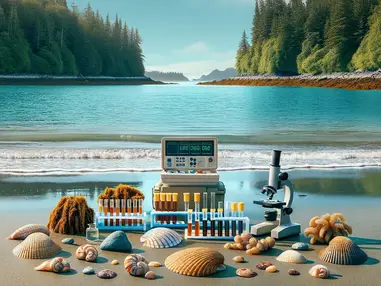In 2016, a group of coastal Alaska Native tribes initiated a monitoring program for shellfish, aiming to detect deadly biotoxins not covered by the state’s testing, which focuses only on commercial harvests. This tribal-led initiative, designed to enhance public health protections, has notably succeeded, with 17 tribes now participating in the testing network. A recent study suggests that securing stable funding and enhancing public outreach could further improve the program’s effectiveness.
Paralytic shellfish poisoning (PSP), caused by toxins from certain algae blooms, can be fatal even in small amounts. While Alaska conducts tests on commercially sold shellfish and advises against consuming shellfish from untested beaches, non-commercial local harvests remain untested, placing coastal indigenous communities, who rely on traditional shellfish harvesting, at a heightened risk of PSP. From 1993 to 2021, Alaska Natives, who constitute 16% of the state’s population, accounted for 53% of recorded PSP cases.
The Southeast Alaska Tribal Ocean Research Network (SEATOR) was established by Alaska Native tribes in 2014 to address this gap, with initial testing starting in 2016. SEATOR’s tribal partners not only collect shellfish samples for testing but also encourage community members to contribute their own samples, facilitating informed harvesting decisions through the sharing of toxin data. Now, the involvement of seventeen tribal communities has amplified participation and awareness of the risks.
However, the program’s expansion and impact are curtailed by financial constraints and community perceptions of risk, highlighting the need for increased funding and improved public awareness strategies, as reported by the study.

